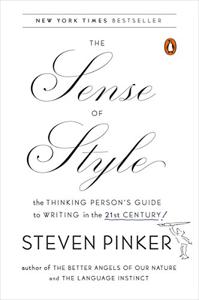
Want to learn the ideas in The Sense of Style better than ever? Read the world’s #1 book summary of The Sense of Style by Steven Pinker here.
Read a brief 1-Page Summary or watch video summaries curated by our expert team. Note: this book guide is not affiliated with or endorsed by the publisher or author, and we always encourage you to purchase and read the full book.
Video Summaries of The Sense of Style
We’ve scoured the Internet for the very best videos on The Sense of Style, from high-quality videos summaries to interviews or commentary by Steven Pinker.
1-Page Summary of The Sense of Style
Overview
The Language Instinct provides an in-depth look into the origins and intricacies of language, offering both a crash course in linguistics and linguistic anthropology along the way. By examining our knack for language, the book makes the case that the propensity for language learning is actually hardwired into our brains. Think of your favorite books. What makes them so good? Is it the wording, opening paragraphs or just how everything fits together? Chances are it’s all of these things – or to phrase it differently, it’s how well you use style. So how can you hone this crucial writerly skill?
Despite Oscar Wilde’s quip that nothing worth knowing can be taught, there are concrete steps you can take to make your writing better. These key points, by examining different types of writing from many different fields, will help you develop a keener sense of style whether you’re an aspiring novelist or just someone who wants to write dazzling emails.
In this article, you will discover how the curse of knowledge can make things difficult to understand, why a simple comma can change everything and what malaprops are and how they should be avoided.
You’ll also find out that we often use words incorrectly without knowing it because we don’t fully grasp their meaning. You’ll learn about some of the most common errors people make when writing or speaking English—and how to avoid them!
Big Idea #1: Writers often get inspiration from other writers.
There are many style guides out there, but most writers don’t read them. Instead they pay attention to other works that they’ve enjoyed and learn from those authors.





